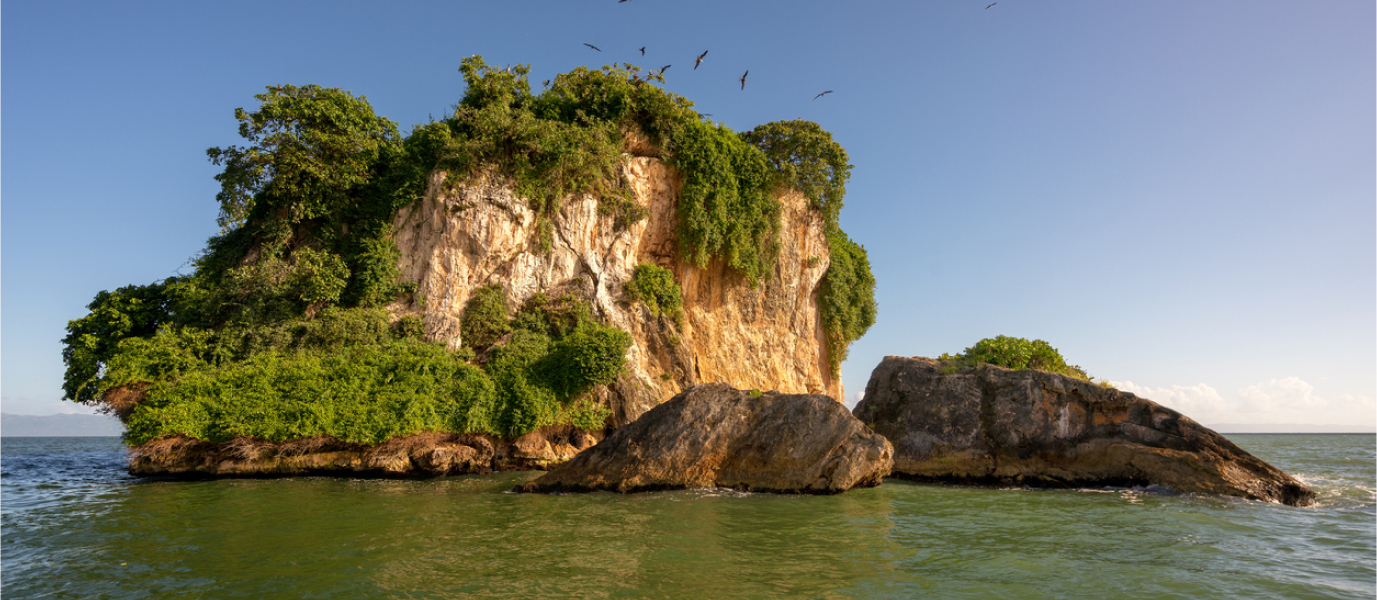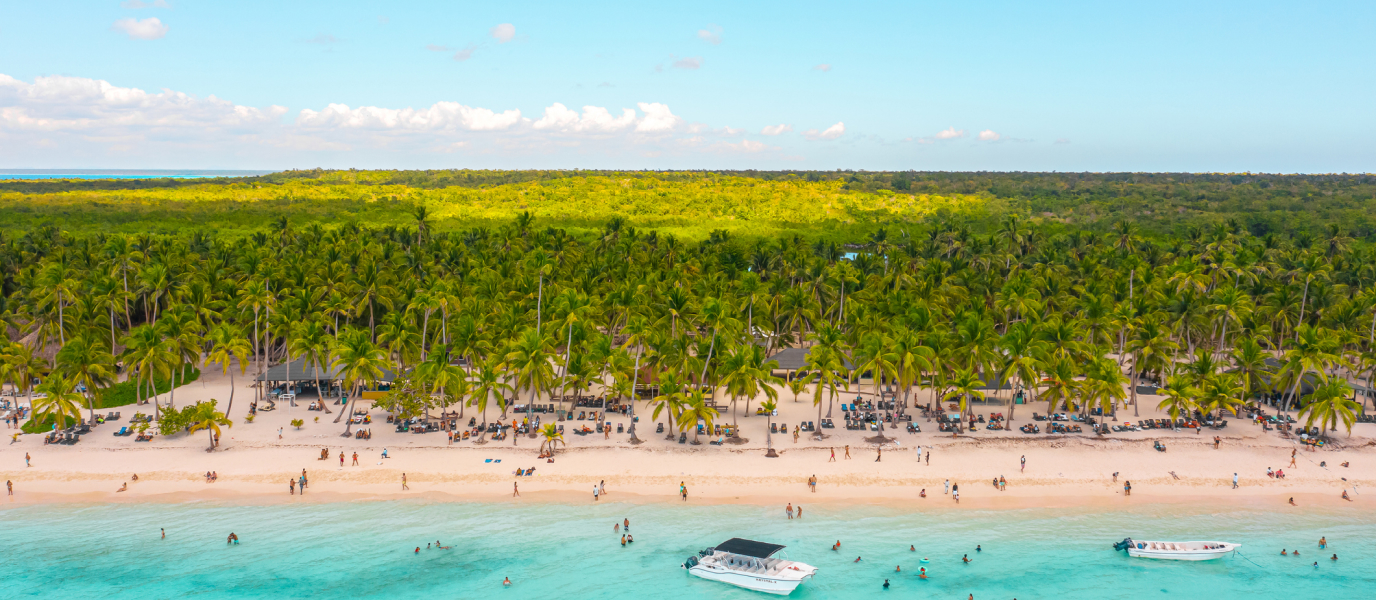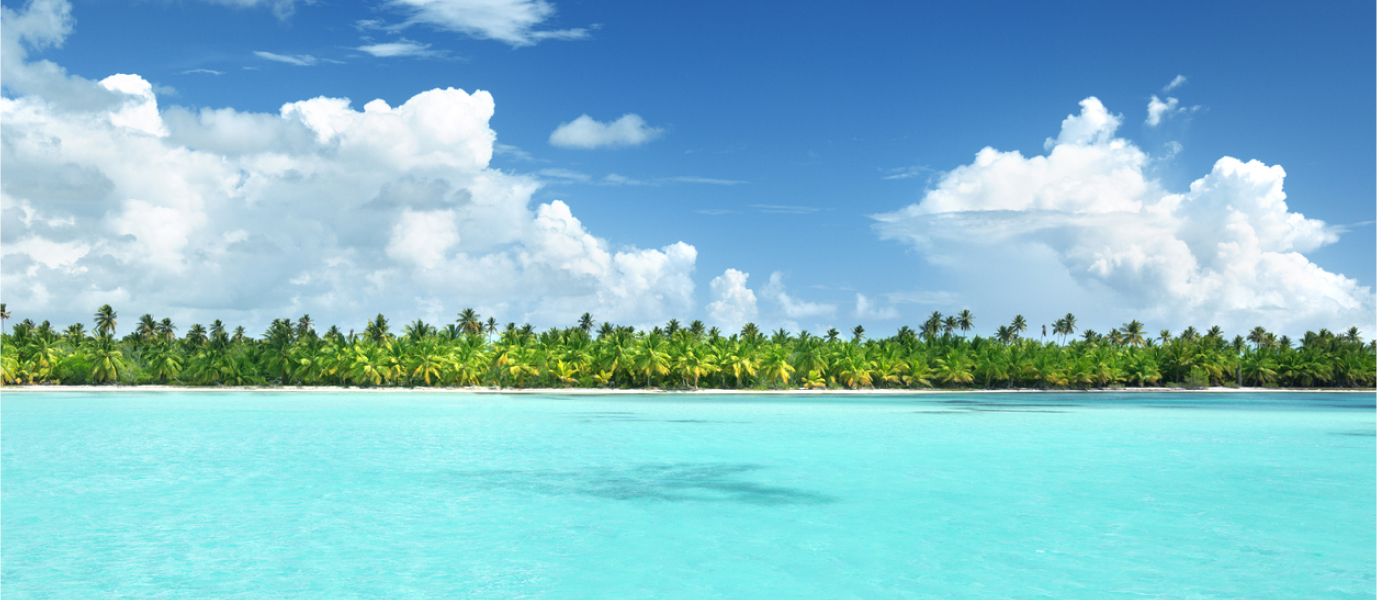The north-east of the Dominican Republic is dominated by the magnificent Bay of Samaná, a unique place where all Mother Nature’s magic is on display. From the annual migration of the humpback whales to the extraordinary rock formations that appear to float on the surface of the sea, and including some of the most striking virgin beaches in the country, this place offers one surprise after another. And it is here, in the south-western tip of the bay, where you will find the Los Haitises National Park, a privileged setting which demonstrates the wealth of this genuine wonder of nature.
A great natural and cultural mosaic
The Los Haitises National Park (the name of which means “high ground” or “mountain” in the language of the ancient Tainos) is one of the Dominican Republic’s most important protected natural landscapes. It covers an area of around 1,600 km2, which forms part of a vast karst system created 50 million years ago, and comprises a rich mosaic of marine and terrestrial ecosystems: estuaries, inlets, bays, keys and mogotes [hummocks] — the curious, cone-shaped rock formations that are a feature of the area’s landscape — as well as sinkholes, mangroves, etc. In other words, this is a huge park teeming with natural attractions where you can enjoy unique adventures.
Apart from its indisputable wealth, this great National Park is also an ideal place to discover the rich (both present-day and pre-Hispanic) cultural heritage of the Dominican Republic Places such as Sabana de la Mar show the modern charm of the Dominican Republic, but in nearly 100 caves scattered throughout the Park, you can discover the country’s largest collection of prehistoric paintings, an invaluable legacy of ancient, pre-Columbian civilizations.
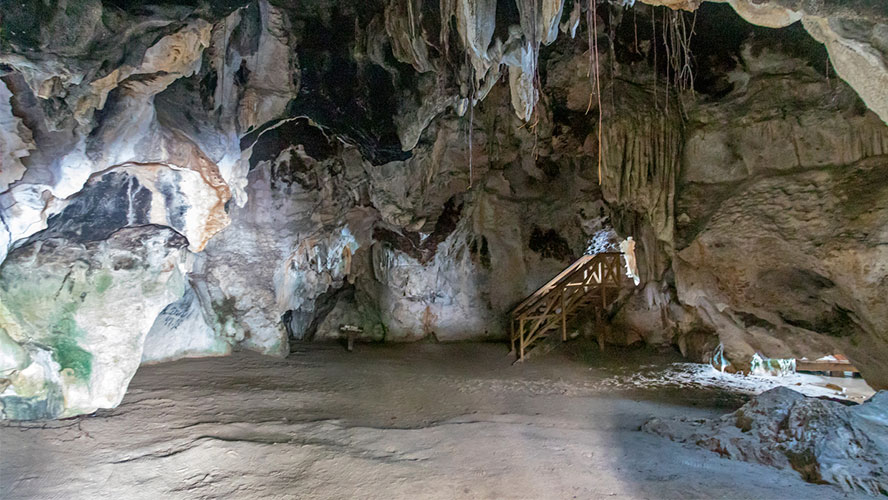
Flora and fauna in Los Haitises: an area pulsating with life
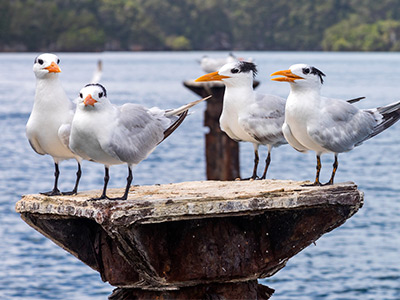
Los Haitises presents a truly astonishing profusion of wildlife. This protected area is home to over a hundred different bird species, from charming pelicans and slender herons, to endemic species at risk of extinction, such as the Ridgway hawk and the La Española [Hispaniola] sparrowhawk. Several types of marine mammals also inhabit this captivating Park: manatees, bottle-nosed dolphins and the splendid humpback whales that visit the area every year. On land, bats, hutias and solenodons are just a few of the animal species for whom the Park provides a habitat. Various reptile species including snakes, geckos and sea turtles add to the natural wealth of this amazing place.
In terms of flora, Los Haitises boasts one of the region’s most precious treasures: the Caribbean’s largest mangrove population, particularly red and white mangrove. In addition, the area’s inland rainforest is home to a tremendous range of wildlife, with an abundance of orchids and great trees, including kapok and mahogany — just two of over 700 plant species, many of which are endemic.
An excursion to Los Haitises: the best time to visit the Park, and what to do there
Los Haitises offers all kinds of experiences from thrilling adventures to visits focusing on appreciating the area’s natural wonders or its archaeological treasures. Of course, you can always have a mixture of all these, and therefore gain a much better appreciation of the Park’s wealth in general.
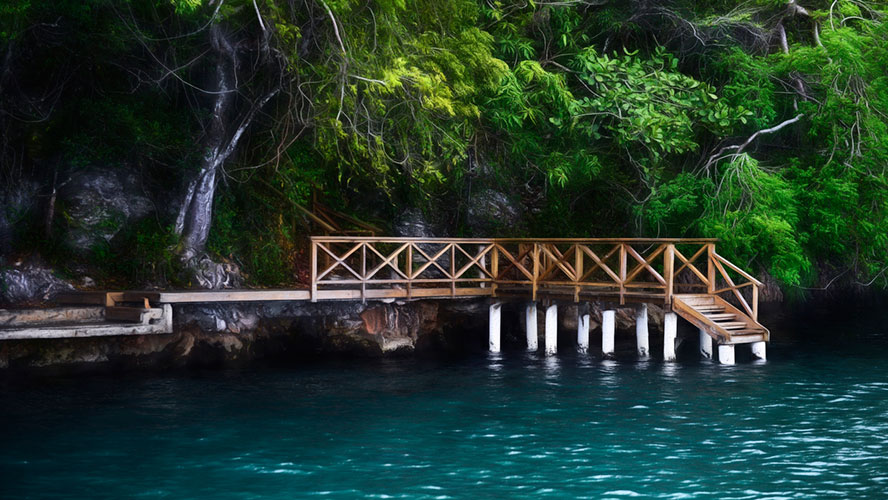
Start with a fantastic boat trip around the keys, bays and inlets that grace the Park’s coastline, and then enjoy kayaking among the mangroves. Follow that with a gentle hike through the rainforest to explore the depths of the Taino caves. Stop off en route for a cooling dip in a waterfall and then recover your energy with a typical, mouth-watering Dominican meal. And to round off the day: a medicinal mud bath that will leave you feeling like a new person. There are endless different possibilities!
San Lorenzo Bay
One of the most remarkable places in the Park is the Bahía de San Lorenzo: a tiny bay that lies within the larger bay. The mangroves, keys, hummocks and rock formations scattered around the bay’s ever-changing coastline are home to all types of birds and marine mammals, making this setting truly phenomenal. Don’t forget to visit the little beach at Punta Arena, a beautiful spot at the tip of the strip of land that closes off the bay’s narrow mouth on its northern side. In addition, the Bahía de San Lorenzo annually receives a seasonal visit from hundreds of humpback whales. An awesome sight!
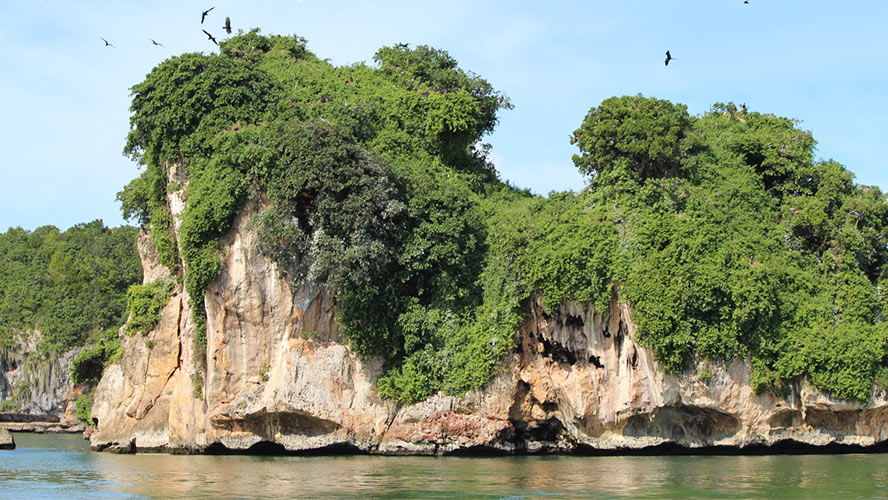
Cayo de los Pájaros [Key of Birds]
This incredible place is like a great city inhabited by all types of birds. It is a curious fact that the Cayo de los Pájaros is just one among many keys to be found around the coast of Los Haitises, but for some reason as yet unknown, it is the favorite gathering place for many bird species. Swallows, herons and pelicans can be seen almost constantly flying low over this strange stone mass covered in lush vegetation. And if you go there during the nesting season (between March and May), keep your eyes peeled, and with luck you may see brown pelican chicks peeping out of their nests.
The Caves of Los Haitises
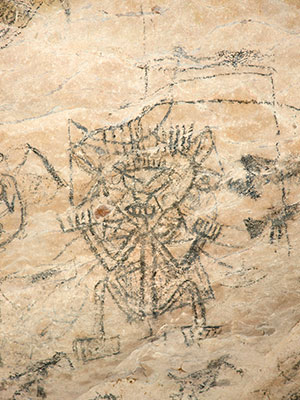
One of the features of the Park’s karst landscape — limestone rocks eroded by water — is the formation of caves of many different sizes; these are one of Los Haiteses’ chief attractions. They draw visitors for two reasons: firstly, their immense natural wealth and the beauty of their rock formations. The second, and perhaps more important, reason is that many of these caves contain amazing collections of pictographs and petroglyphs created hundreds (even thousands) of years ago by the island of La Española’s original inhabitants. Places such as the caves of La Reyna, La Arena, San Gabriel, Willi and La Línea are veritable galleries of tremendously impressive cave paintings that no visitor should miss.
The Los Haitises National Park is open throughout the year, but if you want to be extra careful, minimize the chance of rain, and enjoy less extreme temperatures, plan your visit for between November and April. The summer here is hotter and humid.
Advice for visiting the National Park
The most important thing to remember when you visit Los Haitises, is that nature is king, so if you want to get the most from your experience, it is always best to be well prepared.
- The sun – Although during some stages of your trip you may be protected by the thick vegetation of the rainforest or the shade of the Taino caves, you really need to take care in the sun. Bring a good sunscreen, and it’s also very important to wear a hat. And don’t forget to carry some water, to keep yourself well hydrated.
- The bugs – The Park’s immense natural wealth is its main attraction, and this, of course, includes a large insect population. As ever, the biggest nuisance is the mosquitoes, so don’t forget to bring your repellent. You don’t need to worry too much about the other insects, although it’s always a good idea to proceed with caution if you have any doubts.
- A good guide – The vast area covered by Los Haitises is practically virgin rainforest, so it is always advisable to visit with a well-organized excursion, accompanied by professional guides. This is the best way to explore this fabulous area and, of course, to avoid any untoward event.
- Dress appropriately – Just as, if you go to a wedding, you wear a suit or a long dress, or when you go to the beach you take your swimsuit or bikini, so it is important that you wear suitable clothing on your trip to Los Haitises. Depending on the activities included in your excursion, don’t forget to take footwear suitable for hiking through the rainforest, and you may even need long trousers and a long-sleeved shirt or a waterproof coat, depending on the time of year. If you’re going to participate in water sports, then obviously you will need to take a swimsuit, but you may also need swim shoes, a towel and one or two other things. Dress appropriately, and enjoy this amazing adventure.




































































